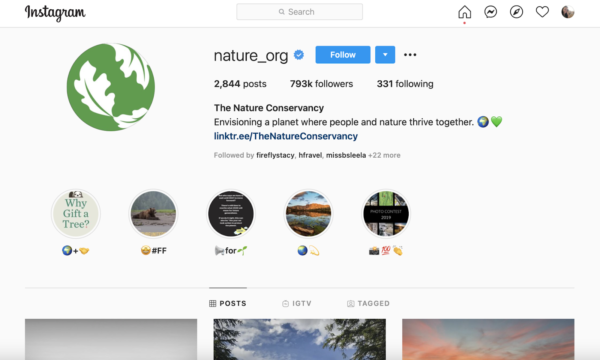
Nonprofit teams can, in the simplest terms, be broken into two groups: those who are working on programs directly helping clients and those working to figure out how to find donors for nonprofit work.
Both groups have a lot of hard work to do every day — work that’s important and rewarding. Data research and experience can help create effective programming, but creativity and strategy are necessary for development work, too.
Finding new people who are willing to underwrite programs can feel challenging for development department employees. Yet, it’s always possible to expand your donor base by connecting your mission with the people and organizations who share your values.
By using the right methods, you can find donors for nonprofit work to help your operations team more effectively complete their valuable work.
Who are your prospective donors?
Before determining where to find donors for a nonprofit, you must first figure out who to look for. In for-profit businesses, this is known as developing your target audience in connection with your brand persona.
In other words: what kind of person would want to support your nonprofit’s important efforts?
The more refined the concept of your donor is, the easier it will be to reach those types of people. Imagine your ideal donor. Consider:
Demographics
Is there an age range, gender, income bracket, or ethnicity that benefits most from your work? Or, are there specific demographics of people who benefit from the work that you’re doing for others?
For example, a spay-and-neuter clinic that I volunteered for offered free vet services for a poor community. These services also impacted wealthier individuals by helping to reduce the stray dog population.
Geography
If you’re wondering how to find donors for nonprofit work, look in your backyard. Narrow your geographic outreach to those communities where potential donors live.
Values
When crafting your message to prospective donors, you’ll need to appeal to what is most important to them in order to motivate them to give. Understanding their values is a critical part of this.
Revisit your agency’s mission statement to see whether it can be modified to better connect to your ideal donor’s values.
Lifestyle
What does your perfect donor like to do? Identify how they get their information so that you can create the right strategy to reach them. Once you know their hobbies, you can brainstorm different ways to integrate your message.
For example, I was able to connect a wealthy ladies’ gardening club with an after-school program by inviting them to help start an organic vegetable garden with students.
Tips for how to find donors for nonprofit agencies
1. Discuss with your board members
Your board members are your best supporters, but they should also be your biggest donors. Start expanding your base by asking them how to find donors for the nonprofit work that they already know is vital to the community.
Consider sending a plea to them with the powerful tool of email segmentation, or simply add it to the next meeting agenda.
2. Targeted social media ads
Facebook ads can be targeted directly to the people you’ve already identified as potential donors, so your paid advertising campaigns will typically be more affordable than you might imagine.
When creating your messages, make your call to action “join” or “build” rather than “donate.” Use emotions as a motivator rather than asking them to simply write a check.
3. Write blogs
Content marketing is a powerful (and free) tool to reach people who are looking for ways to give back to their community. Your blogs can highlight your programs, describe success stories to demonstrate your impact, or announce partnerships with other groups from your region.
Be sure to integrate SEO, or search engine optimization, tools like keywords. Share your blogs on your website, across different social media platforms, and through direct emails to existing supporters.
4. Host in-person networking events
Many in-person networking events through Chambers of Commerce and other groups were put on hold due to the coronavirus pandemic; causing many in-person events to shift to virtual gatherings online. Now, people are ready and eager to gather together in person once more. Is it possible to offer an in-person event at your facility? Or can you partner with a local business to host an event at their venue?
I worked with a hunger relief agency that offered outdoor farm tours and at an animal shelter that organized a meet-up in an outdoor dog park. Consider creative in-person events that not everyone is doing, to garner more attention and hopefully more attendees.
5. Send e-newsletters
Are you collecting email addresses everywhere you go? If not, you’re doing yourself a disservice when it comes to finding new donors.
For example, I would hold a raffle for a basket of donated items anytime I could in an effort to collect email addresses. Then, I could automate a welcome message to new signups and schedule e-newsletters packed with periodic updates — usually monthly — about my nonprofit.
6. Plan virtual events
If you can’t find a venue or seasonal weather or distance prohibit you from hosting an in-person event, you can still reach out to new donors by creating a virtual event.

Connect the hobbies of your target audience with your event, like holding a 5K dog walk for families in your community. Leverage your social media connections by creating a ‘Facebook event’ and be sure to post regularly.
7. Reach out to existing donors
If your current donors have had a good experience while supporting your organization, encourage them to tell their friends about it. This is especially true for the younger generation, which thrives on positive peer pressure and feedback.
Use your social media platforms to challenge your current volunteers, donors, and beneficiaries to reach out and share your message with new audiences.
8. Improve your website
Smart donors will head to your website to learn more about your work before they will give money. If your site is outdated, you may lose that lead.
Ensure that your website is mobile-optimized, meaning that it works just as well on a smartphone as a desktop computer. Incorporate video messages, landing pages for virtual fundraising events, and connections to your social media platforms.

9. Work with your local media
Take it from a former newspaper journalist: the local media has lost a lot of power, but not all of it. People are still getting local news from their local newspaper, so reach out to the reporters that cover your community.
Present story ideas featuring your organization that they may be interested in. Let them know about upcoming events and programs to help spread the message. This is a great method to find donors for nonprofit work at no cost to you.
10. Get #active on Instagram
Social media can feel overwhelming for development teams that are often already stretched thin, but Instagram is worth your extra effort.
Recent upgrades allow you to add “donate” stickers within your Stories and a donate button directly on your Instagram homepage.

Also, consider live streaming events to raise money. Use popular hashtags to connect with new donors who are already emotionally invested in your work.
Follow up to create relationships
Remember, no matter what methods you use to maintain and expand your donor base, development is all about relationships.
You must create a strategy to stay top-of-mind over weeks and months to solidify your organization’s place in the hearts of your supporters. Plan in advance in order to make your marketing plan as effective as possible.




